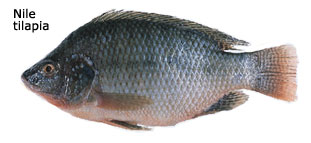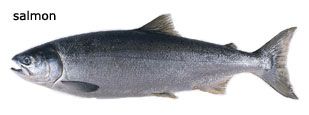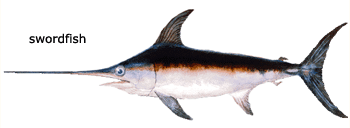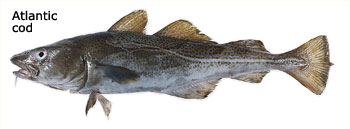There are simply fewer fish in the sea today than there were 100, 50, and even 30 years ago. Harvests of cod in Britain and Iceland, for example, dropped from 300,000 tons per year in the 1980s to just 100,000 tons per year in 1997.1 Not only are fish decreasing in number, but they are decreasing in size as well. Those few fish left in the sea are smaller than ever:
- The Nile tilapia in Lake Wamala decreased from an average size at maturity of 21 cm in the mid-1970s to just 14 cm in the late 1980s and early 1990s.2

- North Pacific salmon in Alaska’s Bristol Bay dropped 25% in mass between 1975 and 1993 — a number that is typical of other North Pacific salmon populations.3

- Between the early 1980s and 2003 the average mass of caught swordfish dropped from 115 pounds per animal to just 60 pounds per animal.1

- Atlantic cod off the coast of Maine have dropped from an average length of 100 cm about a 1000 years ago (which was estimated from archeological data) to an average length of around 30 cm in 1991.4

Though many different factors may have contributed to those declines, over-harvest and selective harvest are likely the key players in this downturn.
1. Ellis, R. (2003). The Empty Ocean. Washington DC: Island Press.
2. Okaronon, J. O. (1995). A decline in fish catches and the size of Oreochromis niloticus in Lake Wamala (Uganda) following human exploitation. Fisheries Resources Research Institute.
3. Bigler, B. S., Welch, D. W., Helle, J. H. (1996). A review of size trends among North Pacific salmon (Oncorhynchus spp.) Canadian Journal of Fisheries and Aquatics Sciences. 53: 455-465.
4. Jackson, J. B. C., Kirby, M. X., Berger, W. H., Bjorndal, K. A., Botsford, et al. (2001). Historical overfishing and the recent collapse of coastal ecosystems. Science. 293: 629-638.
